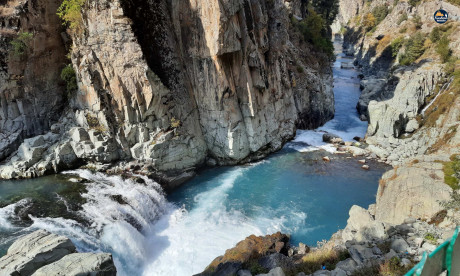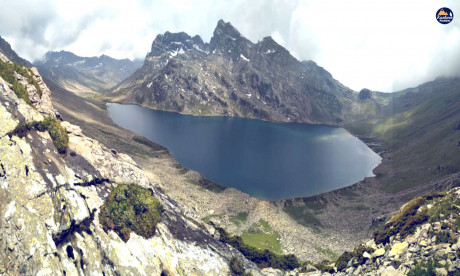Nestled within the captivating landscapes of Kashmir lies a hidden gem that is yet to be fully unveiled by mainstream tourism – the enchanting Bangus Valley. This picturesque valley, surrounded by snow-capped peaks and pristine meadows, offers a retreat into nature’s lap, away from the bustling crowds. In this article, we embark on a journey to explore the beauty and tranquility that define Bangus Valley.
Located approximately 128 kilometers away from Srinagar and nestled at an altitude of 10,000 feet above sea level, Bangus Valley boasts lush green meadows and majestic mountains, making it a stunning gem in the northern region of Kupwara district. Often compared to popular destinations like Gulmarg and Pahalgam, Bangus Valley stands out for its pristine beauty and lesser-touched landscapes.
The main valley, locally known as ‘Boud Bangus’ or Big Bangus, spans around 300 square kilometers and features a linear elliptical bowl surrounded by Rajwar, Mawar, Shamasbury, Dajlungun, Chowkibal, Karnah Guli, and Leepa Mountains. Additionally, a smaller valley named ‘Lokut Bangus’ or Small Bangus lies on the northeastern side, and both are characterized by lush green meadows encircled by low-lying mountains covered with dense pine forests.
The name Bangus is derived from “Ban,” meaning forest, and “Gus,” signifying grass, reflecting the valley’s abundant natural beauty. Its landscape is crisscrossed by numerous small streams and tributaries, including Roshan Kul, Tillwan Kul, and Douda Kul, which collectively form the headwaters of the Kamil River.
Despite facing restrictions due to regional conflicts, recent efforts have aimed to promote Bangus Valley as a tourist destination. With its untouched allure, it has begun to attract visitors seeking solace amidst nature, particularly during the lockdown period when many turned to exploration as a means of escape.
Access to Bangus Valley is facilitated through two routes: one from Mawer, Handwara, and the other from Chowkibal, Kupwara. The valley is an integral part of a unique ecological area, boasting diverse landscapes comprising mountains, grasslands, and coniferous forests teeming with natural vegetation, wildflowers, and freshwater fishes.
The valley also serves as a habitat for a variety of wildlife, including musk deer, antelope, snow leopards, brown bears, black bears, monkeys, red foxes, and numerous species of birds, both resident and migratory. Its vast green plains resemble natural tapestries, exuding extreme natural beauty, serenity, and splendor.
As Bangus Valley gains popularity among tourists, the government needs to ensure sustainable development and conservation efforts to preserve its natural beauty and ecological balance for future generations to enjoy.






